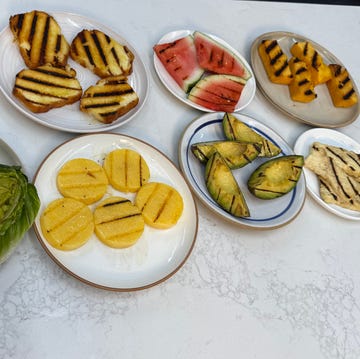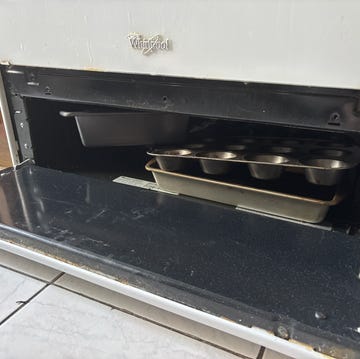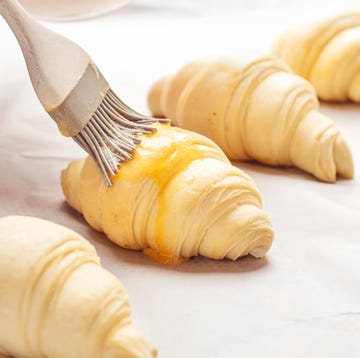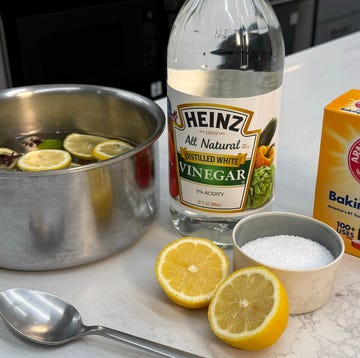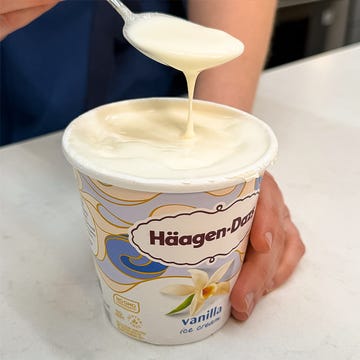Given that bakery cake fails have pretty much become their own category on the internet, spawning sites like Cake Wrecks and several Pinterest boards devoted to the topic, it's tempting to want to take matters into your own hands, lest you wind up with a miscommunication that turns your "blonde girl" cake topper into a "blind girl," or makes you seriously question whether the baker sculpted lady parts onto your kid's birthday cake.
At the very least, then your #cakefails are your own, right?
Yolanda Gampp, a self-taught cake artist, is on a mission to prove that baking your own fondant masterpieces—no matter how complicated they may seem—is easier than you think. Every Tuesday, the former SugarStars contestant uploads a new cake tutorial to her YouTube channel, How to Cake It, breaking down how to make everything from a Minion to Emojis out of sugar, flour and eggs.
Here are her secrets to keeping your cake from epic fail territory:
1. Choose Your Cake Flavor Wisely.
Super-moist cakes, like banana or carrot cake, tend to crumble when you try to sculpt them into character cakes or massive layer cakes. Gampp recommends starting with a firmer cake (especially if you're making a cake that's a foot tall or taller!). Dense chocolate or vanilla cakes tend to be less likely to collapse. Here's her go-to chocolate cake recipe, complete with measurements to make different-sized cakes.
2. Let Yourself Deviate from the Recipe—This One Time.
You've heard a million times that baking is a science, and that you need to follow the recipe to a T, but there's one crucial time to bend the rules: The cook time. Everybody's oven is different, or you might live at a different altitude than whoever wrote the recipe, and that can lead to your cake needing a little more—or less—time to bake. Check it five minutes before the recommended time, and use the toothpick rule: If you insert a toothpick and it comes out with a few moist crumbs attached, it's done cooking.
3. Always Play It Cool.
Many people let their cakes cool for just 10 to 15 minutes before popping them out of the pans—and that can lead to cracks, melted frosting and other disasters. When Gampp removes the cakes from the oven, she immediately puts them on cooling racks and leaves them there for an hour or longer. "I'll slide my hand under the rack, and I want to feel zero warmth coming from that pan before I'll take the cake out," she explains.
4. Going Fancy? Force That Cake to Chill Out.
While you'll get great results working with a cool cake, if you're carving into it at all—say, to create the domed head of a Minion or slanted edge of a Tim Horton's cup—stick it into the freezer to cool it further. A cold cake tends to crumble a lot less, holding its shape so it's easier to mold into whatever your sugar-loving soul desires.
5. Borrow Your Kid's School Supplies.
One of the most useful tools to making pro-level cakes is more likely to be found in your desk than your kitchen: A ruler. Once the cake's removed from the pan, holds a ruler up to the edge of the cake, marks where they're 1 3/4 inches tall, and uses a serrated knife to cut the cake in half cleanly. That way every layer is perfectly level.
6. Accept That Your Cake Will Be A Little Wooden.
When you're building a monument out of cake, you're going to need a few wooden dowels. There, we said it. "You need that support to keep the cake from collapsing," Gampp says. Her rule of thumb? Place dowels for every 4 to 6 inches of height, and when you go to serve the cake, just remove them, layer by layer. "Trust me, your knife isn't going to cut through them," she says.
If your cake is top-heavy—like the Tim Horton's cup cake, which tapers at the bottom—add dowels every 2 to 3 inches.
7. Know When to Sugarcoat Things.
Surely, if you've made a moist cake, there's no reason to slather it in simple syrup, right? Not quite. "It's the No. 1 question I'm always asked," Gampp says. "Creating a character cake takes hours, and in reality, you're typically not decorating them and immediately eating them, so you need to use simple syrup to lock in moisture."
Rather than paint the syrup on the top of the cake with a brush, like many bakers do, Gampp uses a graduated squeeze bottle to shower every layer.
8. Ease into Your Fondant Game.
Fondant—that thick, Play Doh-like frosting you roll out and drape on a cake—seems super-easy to use, but it can actually be a huge hassle: If the cake underneath is uneven, the fondant can look lumpy or get wrinkled like the craggy folds of an elephant's skin. Not sexy.
That's why Gampp recommends putting a thin layer of frosting on the cake to fill out any bumps or holes, then letting it chill (it's easier to smooth the frosting once it's cold) before adding the fondant. The easiest cakes to work with are small, 6-inch round ones, Gamp says.
"The emoji cake is great for beginners," she suggests. "It's not shaped, there are no dowels in it, and you don't even have to layer the cakes. Plus, it uses Italian buttercream, which is so smooth that you won't have to worry about lumps or bumps."
The hardest part is choosing which emotion you want to convey first.
Follow Delish on Instagram.






